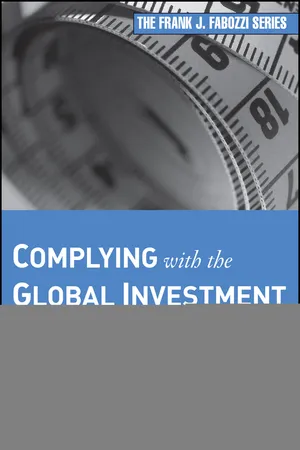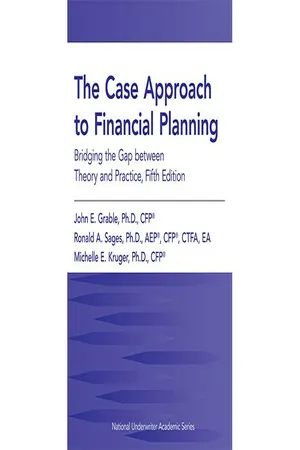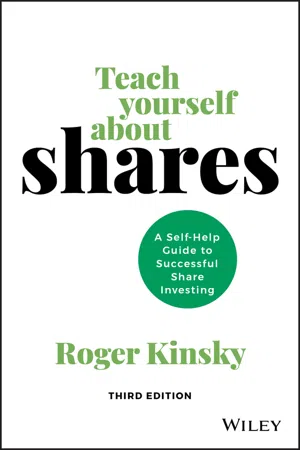Business
Calculate Compound Return
Compound return is a measure of investment performance that takes into account the effect of compounding. It is calculated by taking the initial investment, adding the returns earned over a specified period, and then reinvesting those returns. This process is repeated for each period, resulting in exponential growth of the investment.
Written by Perlego with AI-assistance
Related key terms
1 of 5
4 Key excerpts on "Calculate Compound Return"
- eBook - ePub
- Ted D. Snow CFP MBA(Author)
- 2022(Publication Date)
- ClydeBank Media LLC(Publisher)
One of the principal culprits responsible for the less fortunate circumstances of the 35-year-old investor compared to the success of the 25-year-old is the phenomenon of “compound interest.” Compound interest is not terribly difficult to understand, but the extent to which its power is overlooked by the general public is remarkable. When you are paid interest, dividends, or capital gains, you will almost always have the option of reinvesting these earnings back into the principal investment. Over time, your interest earnings generate their own interest, and your dividend payments begin producing their own dividends. The cumulative effect is exponential in nature and can be instrumental in your accumulation of wealth.To illustrate the power of compound interest, let’s take a look at a hypothetical investment of $500 that gains 10 percent in annual interest. As we’ve discussed earlier, ten percent has been about the average rate of return on the stock market for the past one hundred years.Initial investment = $500 compounding interest rate = 10% number of years investment worth 5 $805.26 10 $1,296.87 15 $2,088.62 20 $3,363.75 25 $5,417.35 30 $8,724.70 35 $14,051.22 40 $22,629.63 45 $36,445.24 Thanks to compound interest, a $500 investment left untouched for forty-five years is now worth $36.5K. For the twenty-five-year-old investor looking to retire at or around age seventy, the ability to leverage compound interest is extremely powerful.One popular and simple approach to calculating returns on investments that accumulate compound interest is to use the Rule of 72, which states that if you divide the number 72 by your compound annual interest rate, you will get the total number of years required to double your money.Let’s go back to our $500 investment in figure 28. If we want to calculate how long it would take to double our money to $1,000, we would make the following calculation:In the Rule of 72 formula, the interest rate is expressed as a whole number rather than as a percentage value. Note that our 10 percent interest rate in the preceding example is expressed as the number 10 rather than 10 percent (.10).Understanding Returns
The return made on any investment is determined by comparing the current value of the investment with the original value of the investment. The strength of a return is normally expressed as a percentage value and is calculated as follows: - Bruce J. Feibel, Karyn D. Vincent(Authors)
- 2011(Publication Date)
- Wiley(Publisher)
Part Two The Methodology for Calculating ReturnsPassage contains an image Chapter 3 Portfolio Return Measurement
The measurement of performance starts with the calculation of return. The periodic change in the value of a portfolio and the resultant growth of assets over time are the most basic concepts of performance. Particular return calculation techniques are required to both recognize and isolate the effects of investor and manager decisions on performance, and measure performance over single and multiple time periods.The calculation of portfolio returns is the first step in creating the composite performance record. A return is the income and profit earned on the capital that the investor places at risk in the investment. Suppose $100 is invested in a portfolio and the portfolio subsequently increases in value such that the investor receives $130 back. What was the return on this investment? The investor gained $30. Taking this dollar return and dividing it by the $100 invested, and converting the result to a percentage gives us a return of 30%.A rate of return- Available until 14 Dec |Learn more
- John E. Grable, Ronald A Sages, Michelle E Kruger(Authors)
- 2022(Publication Date)
- The National Underwriter Company(Publisher)
The purpose of this chapter is to briefly review some of the most important calculations typically made during the financial planning process. After reading this chapter and practicing concepts in the chapter, readers should understand rates of return and time value of money formulas and how to set up equations for later use in a spreadsheet application or financial calculator. Keep in mind, however, that each of the strategies, techniques, and approaches presented in this chapter represent minimal competencies for a financial planning professional. Other calculation techniques will be presented throughout this book. It is, then, important to combine the material from this chapter with techniques from other chapters to develop a comprehensive understanding of the computational skills that an adept financial planner needs to exhibit on a day-to-day basis.2.2 INVESTMENT RATES OF RETURN
[A] Calculating a Rate of Return
One of the most elementary of all personal finance calculations is determining the total return earned on an investment. Financial planners use this calculation to determine how much profit has been earned on an investment during a certain period of time. Rate of return describes the relationship between profit or loss relative to the amount saved or invested. For example, assume an investor deposits $1,000 into an account, the account has a stated rate of return of 6 percent, and the investor leaves the deposit in the account for one year. What will be the account balance at the end of the investment period? How much of the account balance is principal and how much is interest? How much will the account be worth in real terms if inflation—the general increase in the price of goods and services over time—averages 4 percent over the same time period? How much money will be available after paying taxes on the earnings? All of these questions are answered by using various rate of return calculations.To calculate that rate of return on an investment, all sources of income must be identified. The two most common sources of return are income and capital gains - eBook - ePub
Teach Yourself About Shares
A Self-help Guide to Successful Share Investing
- Roger Kinsky(Author)
- 2020(Publication Date)
- Wiley(Publisher)
simple interest because the dollar amount of interest (income on the investment) remains the same.- As you receive income from the investment you don't spend it but instead reinvest it so the income adds to the capital invested. This means that your capital invested and income will both grow over the term of the investment. This is known as compound interest because the profit is re‐invested and compounds the value of the investment.
Notes
- In the short term, compounding doesn't have much effect but in the long term it can make a huge difference.
- An interesting fact about compounding is that the higher the growth rate, the greater the effect of compounding. For example, over the long term, a 10% growth rate will generate far more than twice the growth in value that a growth rate of 5% will.
- If you are trying to build your wealth, the maths of compounding means that the sooner you jump on the bandwagon the better. The early years have a far greater effect than the later years.
- Compounding also works in reverse, so if you have a loan, the sooner you start to pay it off the better.
Example
Compare the profitability of an investment of $10 000 returning 10% pa over 10 years using simple and compound interest:- Simple interest: With simple interest you take out the profit (and don't reinvest it), so your profit each year is $1000 and, after 10 years, you've received $10 000 total profit. Your capital of $10 000 has been returned to you but, in fact, because of inflation it's worth less in terms of today's purchasing power.
- Compound interest: You don't take out your profit each year but reinvest it. Now, your total profit is $15 930 so, because of compounding, you've made $5930 more profit. Furthermore your invested capital has risen from $10 000 to $25 930. This is a huge difference compared to the initial $10 000 invested!
The calculations behind these figures are shown in table 2.1
Index pages curate the most relevant extracts from our library of academic textbooks. They’ve been created using an in-house natural language model (NLM), each adding context and meaning to key research topics.



